Step-by-Step Guide to Calculating First Response Time
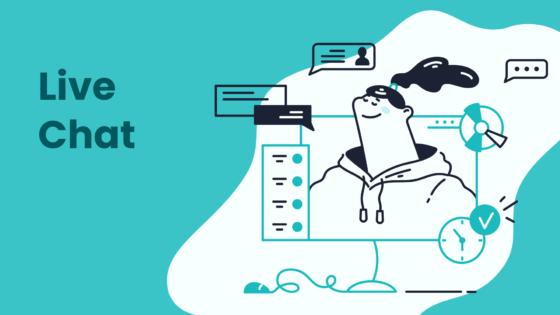
First response time measures how quickly your team replies to customer inquiries. It plays a pivotal role in shaping levels of customer satisfaction. Customers often expect rapid responses—within 40 seconds for SMS or live chat and under an hour for emails. Meeting these expectations can prevent lost sales and improve retention. Quick replies also reduce the chances of customers reaching out multiple times, which can overwhelm support teams.
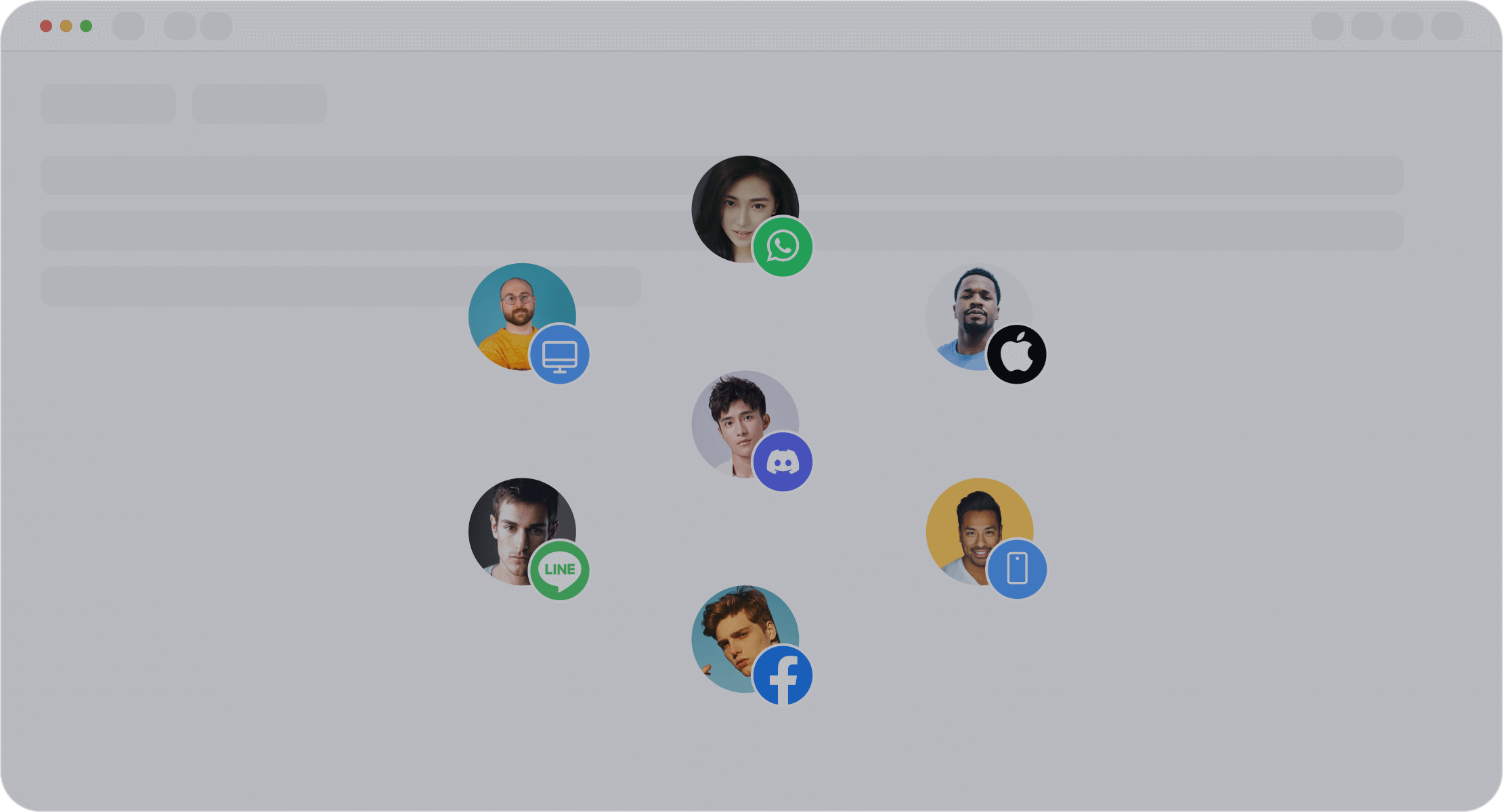
Tracking your first response wait time helps identify bottlenecks and streamline your customer service. Tools like Sobot Live Chat unify all communication channels, enabling agents to respond instantly. With features like omnichannel support and AI-powered tools, Sobot ensures no missed opportunities to delight your customers.
Understanding First Response Time and Its Importance
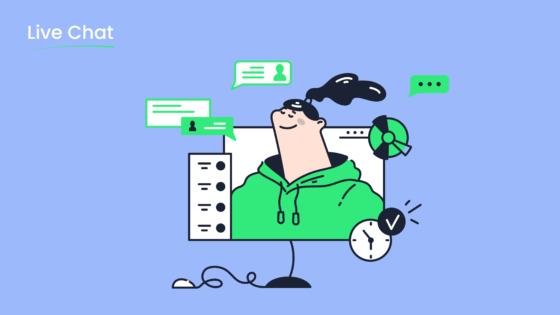
What is First Response Time?
First response time refers to the duration between when a customer submits a request and when your team provides the initial reply. It is a critical metric in customer service, as it reflects how quickly you address customer inquiries. This measurement applies across various communication channels, including live chat, email, and social media.
| Definition | Description |
|---|---|
| First Response Time (FRT) | The duration from when a customer submits their case to when a contact center agent responds to it. |
| First Response Time (FRT) | The measurement of how long it takes support representatives to provide an initial response to a customer request. |
Tracking first response time helps you understand how efficiently your team handles customer inquiries. It also highlights areas where improvements can be made to enhance customer satisfaction.
Why First Response Time Matters for Customer Success
Quick responses create a positive impression and show customers that their time is valued. When you reduce first response wait time, you improve the overall customer experience. This metric influences several aspects of customer success:
- Enhances Customer Experience: Rapid replies lead to smoother interactions.
- Builds Brand Trust: Customers associate low response times with reliability.
- Improves Customer Retention: Faster responses reduce the likelihood of customer churn.
- Strengthens Competitive Advantage: Efficient first response differentiates your brand in the market.
By prioritizing first response time, you demonstrate your commitment to providing exceptional customer service. This focus can lead to stronger relationships with your customers and increased loyalty.
Industry Standards for Average First Response Time
Understanding industry benchmarks for average first response time helps you set realistic goals for your team. These benchmarks vary depending on the communication channel:
| Communication Channel | Average Response Time Benchmark | Customer Expectation |
|---|---|---|
| Live Chat | Under 30 seconds | Within seconds |
| Phone Support | Under 2 minutes | 2 minutes |
| Within 1 hour | 78% of customers expect this | |
| Within 4 hours | Anticipated within 30 minutes |
For live chat, customers expect responses almost instantly, with industry averages around 1 minute and 36 seconds. Social media platforms like Twitter and Facebook have longer benchmarks, but customers still anticipate timely replies. Email inquiries typically have the longest response times, averaging at least 24 hours. By aligning your team's performance with these benchmarks, you can meet customer expectations and improve satisfaction.
How to Calculate First Response Time Accurately
The Formula for Calculating First Response Time
Calculating first response time is straightforward when you use the right formula. It involves measuring the time between when a customer submits a request and when your team provides the initial reply. Here's the formula:
First Response Time = Time of First Reply - Time of Customer Request
For example, if a customer sends a message at 2:00 PM and your team responds at 2:10 PM, the first response time is 10 minutes. This calculation applies to individual tickets or inquiries. To find the average first response time for multiple cases, you sum up all response times and divide by the total number of cases.
Average First Response Time = Total Response Time ÷ Number of Tickets
This formula helps you track how efficiently your team handles customer inquiries over time.
Example Calculation of Average First Response Time
Let’s break down an example to make this clearer. Imagine your team handled seven tickets with the following response times (in minutes):
| Ticket Number | Response Time (minutes) |
|---|---|
| 1 | 10 |
| 2 | 8 |
| 3 | 30 |
| 4 | 15 |
| 5 | 7 |
| 6 | 8 |
| 7 | 6 |
| Total | 84 |
| Average | 12 |
Using the formula, you calculate the average first response time as follows:
Average First Response Time = Total Response Time ÷ Number of Tickets
Average First Response Time = 84 ÷ 7 = 12 minutes
This means your team takes an average of 12 minutes to respond to customer inquiries. Visualizing this data can also help you identify patterns or outliers in response times:

Tracking this metric regularly allows you to monitor performance and make improvements where necessary.
Factors That Impact First Response Wait Time
Several factors influence how quickly your team can respond to customer inquiries. Understanding these factors helps you identify areas for improvement:
- Volume of Requests: A high number of incoming tickets can overwhelm your team, leading to longer response times.
- Agent Availability: Limited staff during peak hours often results in delays.
- Channel of Communication: Response times vary by channel. Live chat typically sees faster replies compared to email or social media.
- Complexity of Inquiries: Simple questions get resolved faster, while complex issues may require more time.
- Technology and Tools: Outdated systems or lack of automation can slow down response processes.
Research also highlights subjective factors like perceived waiting time and tolerance levels. For instance:
- Perceived Waiting Time (PWT): How long customers feel they’ve waited.
- Reasonable Waiting Time (RWT): The time customers consider acceptable for a response.
- Tolerance Waiting Time (TWT): The maximum time customers are willing to wait before becoming dissatisfied.
Personal factors, such as age and gender, can also influence how customers perceive waiting times. By addressing these factors, you can optimize your first response processes and improve customer satisfaction.
Tools and Methods to Track First Response Time
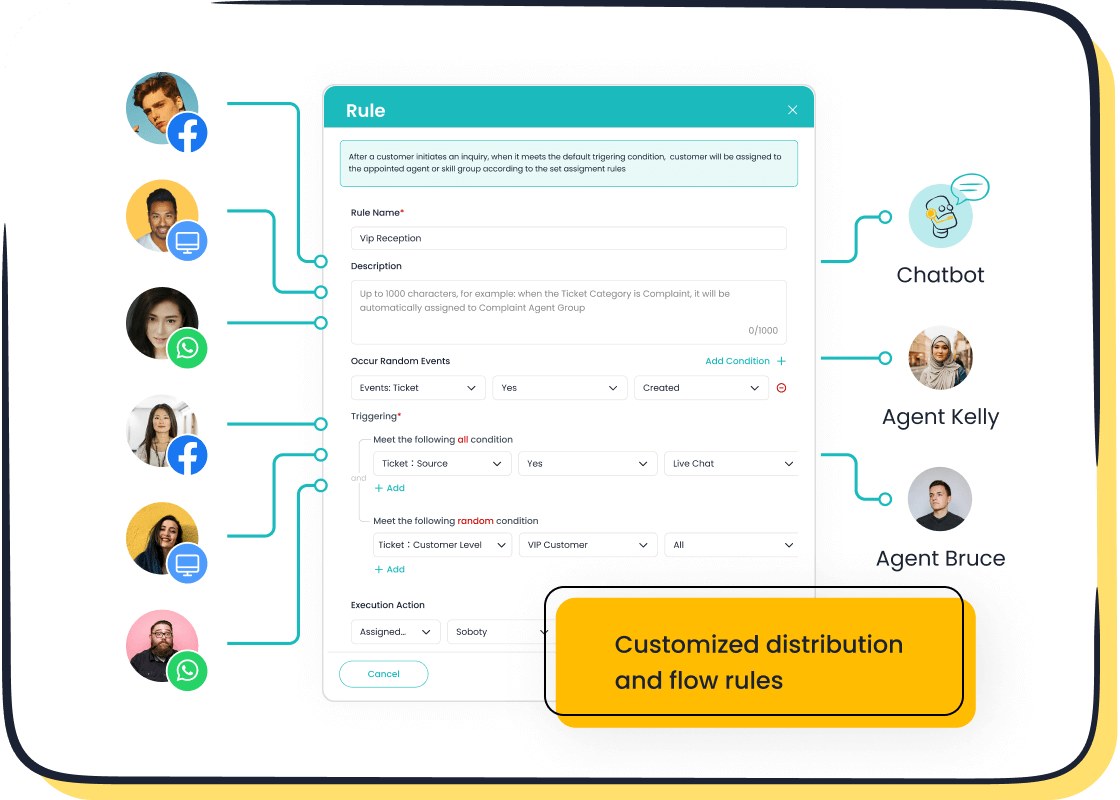
Using Sobot Live Chat to Track First Response Time
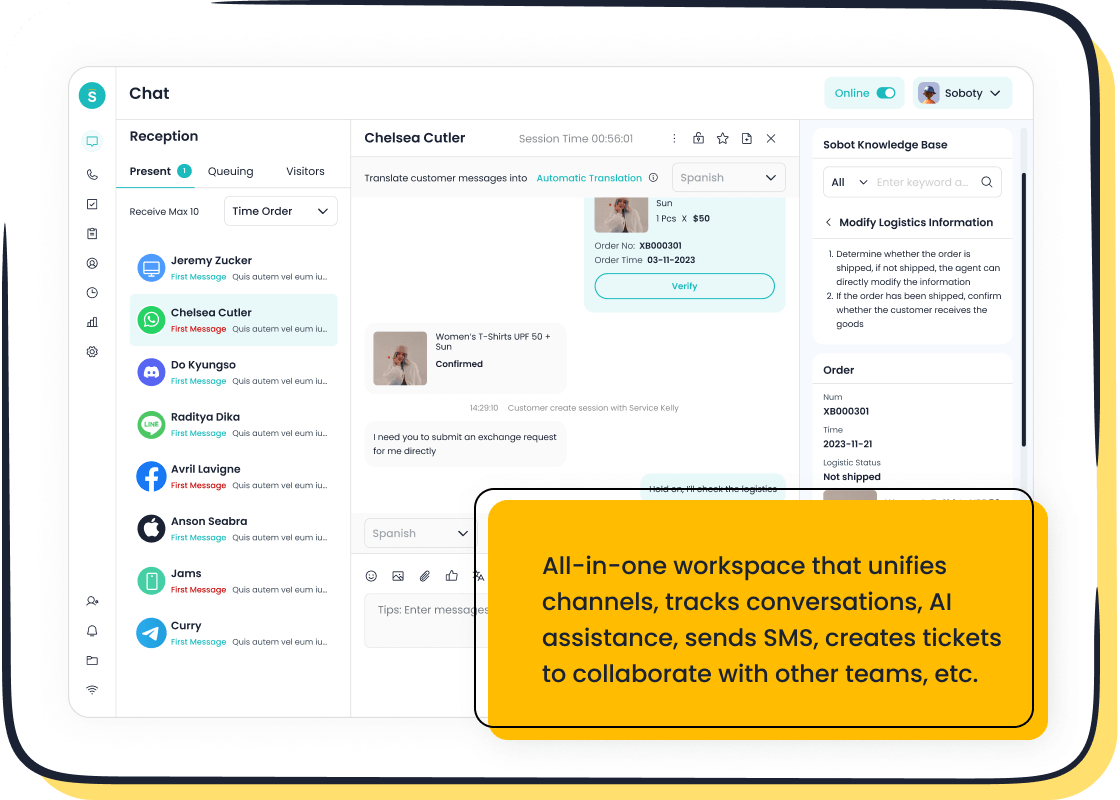
Sobot Live Chat simplifies how you track first response time by consolidating all customer interactions into a single, unified workspace. This platform supports omnichannel communication, allowing you to monitor response times across websites, apps, and social media platforms like WhatsApp, Facebook, and Instagram. With built-in analytics, Sobot Live Chat evaluates over 150 indicators, providing you with actionable insights to improve your customer service.
For example, the platform’s AI-powered tools can identify patterns in response times, helping you pinpoint delays caused by high ticket volumes or agent availability. Additionally, its intelligent assignment feature ensures that customer inquiries are routed to the right agent instantly, reducing wait times. By leveraging these capabilities, you can not only track first response time but also optimize it to meet industry benchmarks.
Manual vs. Automated Tracking: Which is Better?
Manually tracking first response time involves recording timestamps for each customer inquiry and response. While this method may work for small teams, it becomes inefficient as your business grows. Manual tracking often leads to errors and delays, making it harder to maintain accurate records.
Automated tracking, on the other hand, uses tools like Sobot Live Chat to streamline the process. Automation eliminates human error and provides real-time data, enabling you to monitor performance effortlessly. For instance, Sobot Live Chat’s analytics dashboard offers instant access to metrics like average first response time, allowing you to make data-driven decisions. Automated tracking also integrates seamlessly with CRM systems, ensuring that all customer interactions are logged and analyzed efficiently. If you aim to scale your customer service operations, automated tracking is the superior choice.
Integrating First Response Metrics with Customer Success Goals
First response time is more than just a metric; it’s a cornerstone of your customer success strategy. By integrating this data with broader goals, you can enhance customer satisfaction and retention. For instance, tools like Sobot Live Chat provide instant, personalized support, which not only improves response times but also strengthens customer relationships.
Research shows that customers planning to leave often change their language patterns 30-45 days before canceling. They use fewer relationship-focused words and adopt a more business-like tone. By monitoring these subtle shifts, your team can proactively address concerns, reducing churn. Additionally, configuring your CRM system to capture escalation details helps identify early warning signs, enabling timely interventions. When you align first response metrics with customer success objectives, you create a proactive approach that drives growth and loyalty.
Leveraging First Response Time Data to Improve Customer Service
Identifying and Resolving Bottlenecks in First Response
Bottlenecks in first response processes can slow down your team and frustrate customers. Identifying these issues is the first step toward improving efficiency. Common bottlenecks include high ticket volumes, unbalanced workloads, and limited agent availability during peak hours. For example, recurring congestion at signalized intersections in urban areas mirrors how delays occur in customer service workflows.
| Bottleneck Type | Common Causes | Location Characteristics |
|---|---|---|
| High Ticket Volume | Seasonal spikes, promotions | Customer service during sales |
| Agent Availability | Staffing shortages | Peak hours or holidays |
| Complex Inquiries | Lack of training | Across all communication channels |
Resolving these bottlenecks requires proactive measures. Automating repetitive tasks with tools like Sobot Live Chat can reduce delays by 37%. Intelligent assignment features ensure that customer inquiries reach the right agent instantly. By addressing these challenges, you can streamline your first response processes and improve first response wait time.
Setting Realistic First Response Time Goals
Setting achievable goals for first response time ensures your team meets customer expectations without compromising quality. Industry benchmarks provide a helpful starting point. For instance, live chat should aim for a response within 2 minutes, while email allows up to 24 hours.
| Communication Channel | First Response Time Goal |
|---|---|
| Within 24 hours | |
| Social Media | Within 60 minutes |
| Live Chat | Within 2 minutes |
| Phone | Within 3 minutes |
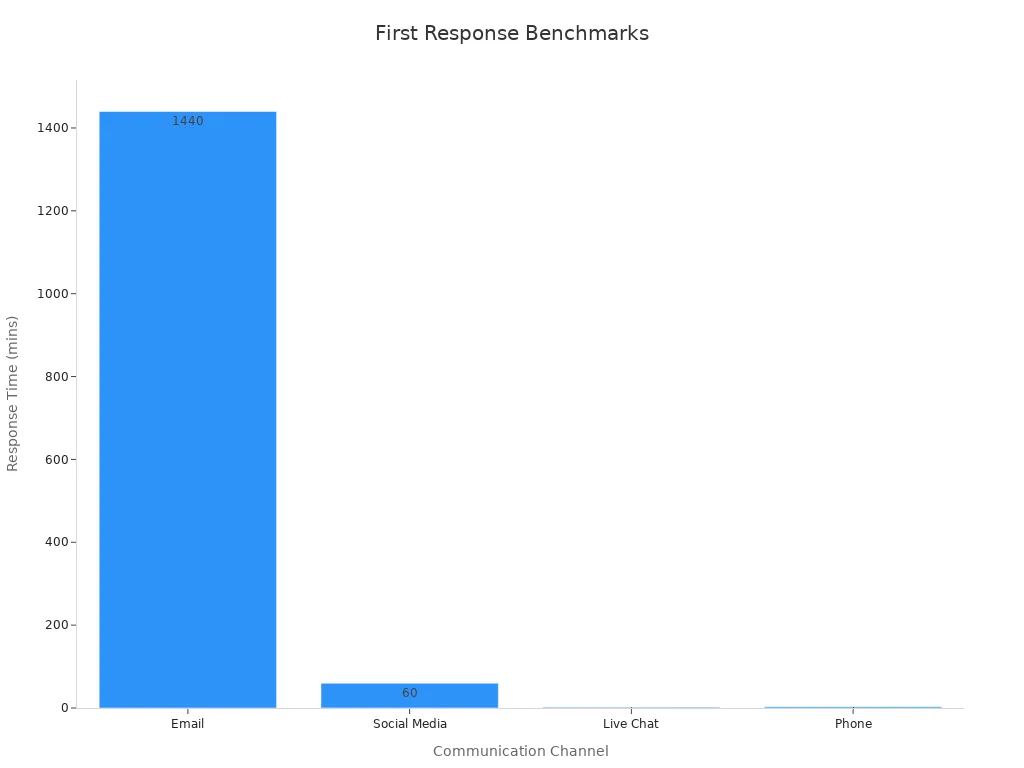
To improve first response time, align your goals with customer expectations. For example, responding to live chat inquiries in under 60 seconds can set your brand apart. Regularly review your team’s performance to ensure these goals remain realistic and achievable.
Training Teams to Optimize First Response Efficiency
Your team plays a crucial role in delivering a personalized first response. Training equips them with the skills needed to handle customer inquiries efficiently. Focus on areas like active listening, product knowledge, and using tools like Sobot Live Chat effectively.
Role-playing scenarios can help agents practice responding to different types of inquiries. For instance, they can simulate handling a complex issue on live chat or resolving a social media complaint. Encourage agents to use built-in analytics to monitor their response times and identify areas for improvement.
Additionally, fostering a supportive work environment reduces burnout and absenteeism, which are common bottlenecks in customer service. When your team feels empowered and well-prepared, they can deliver faster and more effective responses, enhancing the overall customer experience.
Best Practices for Maintaining Optimal First Response Time
Establishing Clear First Response Policies
Clear policies ensure your team delivers consistent and efficient customer service. Start by training agents in communication, problem-solving, and product knowledge. These skills help them respond to customer inquiries quickly and accurately. Use service level agreements (SLAs) to define response standards. For example, set a goal to reply to live chat messages within 2 minutes or emails within 24 hours. SLAs increase accountability and keep your team focused on meeting expectations.
Create a knowledge base to empower customers with self-service options. This reduces ticket volume and allows your team to focus on complex issues. Prioritize tickets based on urgency to address critical problems first. Prevent agent burnout by implementing strategies like rotating shifts and providing regular breaks. Motivated agents perform better, ensuring faster response times and higher customer satisfaction.
Leveraging Automation with Sobot Live Chat
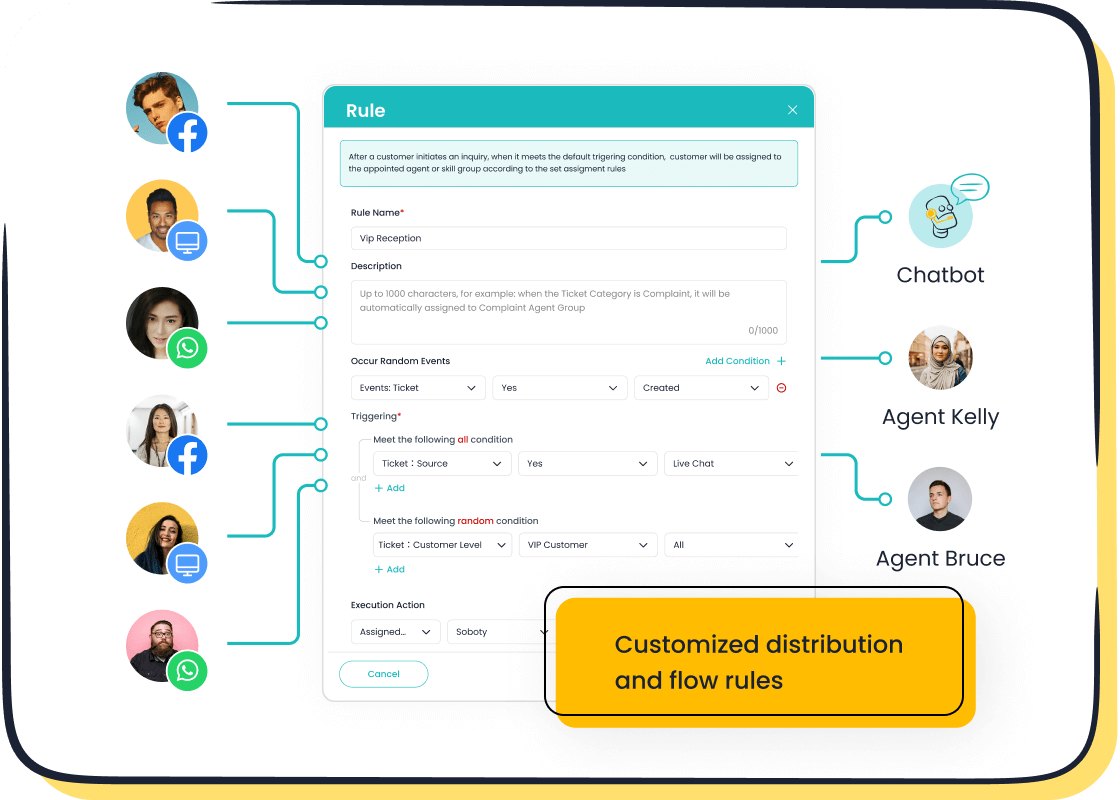
Automation transforms how you handle customer service. Sobot Live Chat uses AI-powered tools to streamline workflows and improve response times. For instance, its intelligent assignment feature routes inquiries to the right agent instantly. This reduces delays and ensures customers receive timely assistance. The platform also resolves 22.2% of questions through self-service, freeing up agents to focus on more complex tasks.
Built-in analytics evaluate over 150 indicators, helping you identify patterns and optimize performance. Metrics like a 96% increase in positive feedback and a 99% customer happiness rate highlight the impact of automation. Sobot Live Chat’s AI provides 80% correct answers, enhancing efficiency and accuracy. By leveraging these features, you can maintain optimal first response time and deliver exceptional customer service.
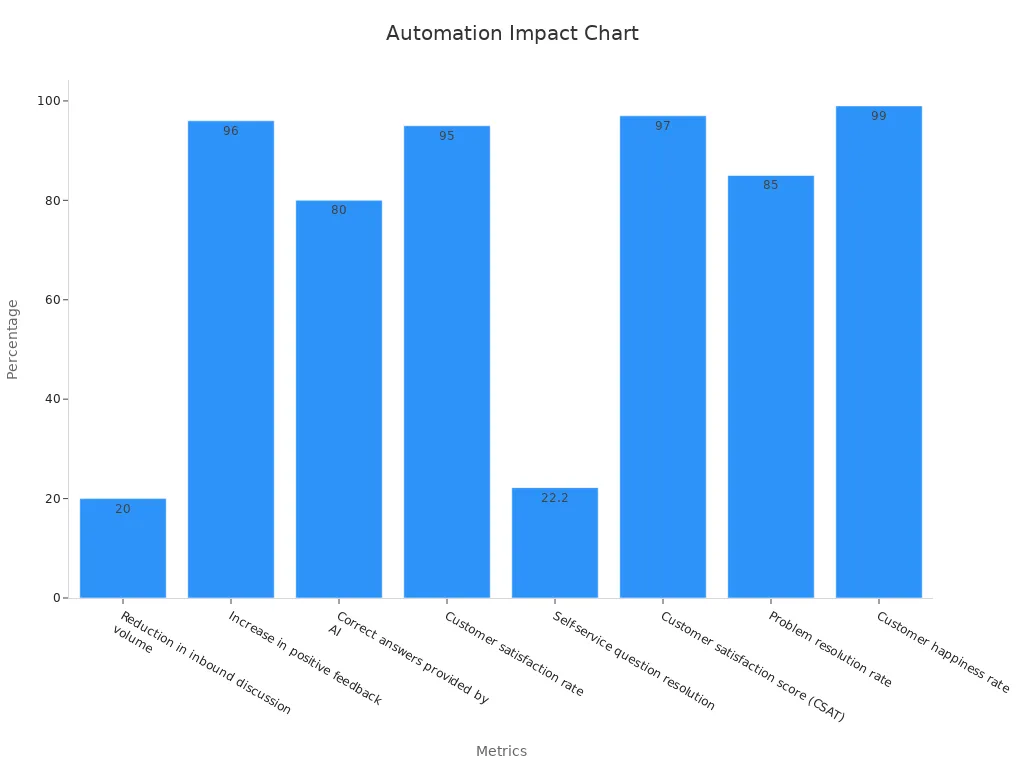
Continuously Monitoring and Refining First Response Metrics
Ongoing monitoring ensures your team consistently meets response time goals. Use statistical analysis to identify outliers and unusual patterns in response times. Regular audits verify compliance with quality standards and uncover areas for improvement. For example, tracking data quality metrics helps you measure progress and demonstrate the value of your efforts.
Sobot Live Chat’s analytics dashboard simplifies monitoring by providing real-time insights. AI and machine learning enhance data quality assurance, enabling swift responses to emerging problems. Quantitative measures like customer satisfaction scores (CSAT) and problem resolution rates highlight areas needing attention. By refining your metrics, you can adapt to changing customer needs and maintain high service standards.
Optimizing first response time creates a foundation for exceptional customer service. It enhances customer satisfaction, builds loyalty, and reduces churn rates. By addressing inquiries quickly, you show customers that their time matters. Tools like Sobot Live Chat simplify this process by unifying communication channels and leveraging AI to streamline responses. This allows your team to focus on resolving complex issues while maintaining efficiency.
Implementing these strategies ensures long-term benefits for your business. Faster responses lead to happier customers, stronger relationships, and improved retention. Start today by setting clear goals, training your team, and using advanced tools to refine your approach. Your commitment to better service will set your brand apart and drive lasting success.
FAQ
How does first response time impact customer satisfaction?
First response time directly affects how customers perceive your service. Quick replies show you value their time, leading to higher satisfaction. Delays can frustrate customers and increase churn rates. Tracking this metric helps you improve response efficiency and build stronger customer relationships.
Can Sobot Live Chat handle multiple communication channels?
Yes, Sobot Live Chat supports omnichannel communication. It integrates websites, apps, and social media platforms like WhatsApp, Facebook, and Instagram. This ensures you can respond to customers on their preferred channels without missing inquiries.
What tools can help automate first response tracking?
Automation tools like Sobot Live Chat simplify tracking. Its built-in analytics monitor response times and provide actionable insights. Features like intelligent assignment and AI-powered tools reduce delays, ensuring faster replies and improved customer satisfaction.
How can I set realistic first response time goals?
Use industry benchmarks to guide your goals. For live chat, aim for under 2 minutes. Social media responses should occur within 60 minutes. Regularly review your team’s performance to ensure goals align with customer expectations.
Does Sobot Live Chat offer analytics for first response time?
Yes, Sobot Live Chat evaluates over 150 indicators, including first response time. Its analytics dashboard provides real-time insights, helping you identify delays and optimize performance. This ensures you meet industry standards and improve customer satisfaction.
See Also
Essential QMS Principles for Effective Call Center Management
A Comprehensive 10-Step Guide to Omnichannel Solutions
Setting Up IVR Software: A Complete Step-by-Step Guide
Comparative Analysis of Leading Interactive Voice Response Software
Enhancing Call Center Efficiency Through Effective Monitoring Techniques
